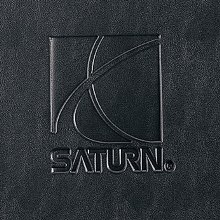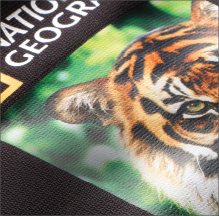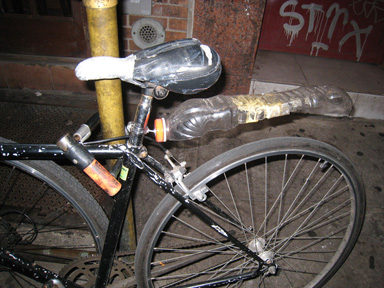There are lots of different ways to brand, decorate, or embellish a product with your logo—so many, in fact, that it might seem a bit overwhelming at first when you’re trying to figure out which method is right for your needs. Choices could range anywhere from printing a logo or inking it directly on a garment such as a t-shirt or a notebook or notepad on to laser engraving, which is often used to create tasteful designs on pens.
Whatever your requirements, we have a way to make sure that your branding stands out and looks great on the product you select. Here are a few of the most popular printing processes for promotional products and how they are used to best showcase a company’s logo.
 Debossing / Embossing
Debossing / Embossing
Debossing is an elegant and attractive way to make an impression directly into the surface of an object. Embossing also impresses an image into the surface, but in relief—creating a raised image within the material. Both processes work well on leather or simulated leather, although you may also see them on other materials often associated with fine stationery and notepads and vinyl patches. Like embroidery, debossing and embossing add a high perceived value to the item and are long-lasting decoration techniques.
Decal
A decal is a design that is printed on special paper, then transferred to a promotional product made from material such as ceramic, porcelain, or metal. It’s one of the most effective ways to get a full color imprint on these types of surfaces, which are otherwise tricky to print on or decorate.
Die-Striking (also known as die-stamping)
Die-striking, also known as die-stamping, is often used to create emblems and other flat promotional products. A hard metal die is used to press or stamp an image into a softer metal such as brass or gold. It can be used to create lettering and simple designs, but is not ideal for detailed or complex artwork. Die-striking is commonly used on medals, coins and belt buckles.
 Digital Printing
Digital Printing
Digital printing is a four color, CMYK process that can create photo-quality images in full color with a single pass through the printing machine as opposed to screen printing, which requires a separate pass for each color. It’s a particularly good choice for artwork with lots of colors, shading or gradients.
Embroidery
Embroidery involves using needlework and machine stitching to create an attractive logo using vibrant, colored threads to match your branding. Commonly used on apparel such as t-shirts and hats, embroidery is a fine choice for adding high perceived value to the item and making it desirable.
Etching
In the etching process, an image is first covered with an acid-resistant protective coating. Portions of the image are left exposed, leaving bare metal and protected metal, and then the entire image is exposed to acid. The acid attacks only the exposed metal, leaving the image etched onto the surface. It can be used to create very fine lines and detailed designs.
 Foil Stamping
Foil Stamping
Foil stamping involves applying pigment or metallic foil to the surface of a product such as a leather padfolio or a gift box. It can be performed as a standalone decoration technique or as a follow-up step to the embossing process, creating an attractive 3D image of a logo or custom design.
Hot Stamping
Hot stamping involves transferring pre-dried inks or foils to a product at a high temperature. It is especially effective on plastic products, but wood, leather, and paper products are also commonly decorated using this technique as well.
 Laser Engraving
Laser Engraving
Engraving, or laser engraving, is a sophisticated way to custom brand promotional items with an image, your organization name, or your logo. It involves using a laser to apply a logo directly to a product, removing the top coat and revealing the color beneath it. Laser engraving is especially effective on metal items such as pens, and plaques wood items, like cutting boards, and glass or crystal corporate awards.
Pad Printing
Pad printing is similar to screen printing, but it’s often used for small objects with an irregular shape, such as a stress ball or a key chain. In pad printing, a recessed surface is covered with ink. When the plate is wiped clean, the ink remains in those recessed areas. A pad then is pressed directly against the product to create a design. Pad printing is great for printing or decorating small, oddly shaped objects that can’t be run through the screen printing process. Plastics, paper, ceramics, glassware, wearables, leather, and vinyl are some popular materials used with this process.
Patches (embroidered, appliqué rubber/pvc)
A patch is a standalone patch featuring a company logo that can be embroidered, woven or dye sublimated, and even made of rubber. Patches can be used on wearables or a wide range of items—whether it’s a bag, a hat, a t-shirt, or a jacket. Patches can be in custom sizes and shapes and in a variety of colors that can match your unique branding.
Personalization
As the name suggests, personalization is a technique for personalizing an object with someone’s name or initials. It’s a fine choice for occasions when you want to recognize someone’s exceptional achievements or their ongoing contributions to the company. This technique can be applied to a wide range of products and can be combined with other decoration methods to include a company logo.
 Screen Printing
Screen Printing
Screen printing, sometimes also called silk screening, is a technique in which an image or design is transferred to the surface of a product with ink that has been squeezed by a squeegee through a stenciled screen stretched over a frame. The screen or screens are then coated with a light-sensitive emulsion, then exposed to a strong light. The light hardens the areas that have been coated with the emulsion, leaving a permeable area on the screen where the squeegee can successfully apply ink. Screen printing is an effective printing or decorating method for objects with an irregular shape—particularly items that are made from glass, plastic, fabric, or wood.
Sublimation
In the sublimation process, toner or ink is thermally converted to a gas that hardens on the special substrate used by the printer. Printers that use this process are able to create smooth, even tones using soft-edged dye spots. This technique is somewhat new and can be used on many different types of materials.
 Transfers (also known as heat transfers)
Transfers (also known as heat transfers)
Transfers involve printing an image onto fabric that is usually synthetic fabrics. An image or logo is first printed on paper with special dyes, then transferred to the fabric with heat. After that, the fabric absorbs the dye from the paper. Printed heat transfers are a great alternative to screen printing for small-order program runs and multi-color logos, and they are particularly good at printing clear text at small sizes.
Of course, there are even more options for branding promotional items with your artwork or logo! Stay tuned for future blog posts in which we take a deeper dive into related topics, such as what printing processes are most ideal for apparel and other types of products.
If you have a project in mind that might benefit from some expert consultation, drop us a line! We’d be happy to share advice and suggestions on what printing or decoration process might work best for you. Connect with us on Twitter and Facebook or call us at 877-881-6845 and we’ll advise you on solutions that can represent your company with style and grace.
 Ok, let’s be honest. When you think of promotional items, does the word “cool” come to mind? If the answer is no, you’re probably not alone. Promotional products were not historically seen as hip, trendy, or fashionable, but a lot has changed in recent years. Now swag, once looked at with more than a whiff of disdain, is cool. Even the meaning of the word ‘swag’ has been updated to mean something cool, a unique personal style, or something you approve of.
Ok, let’s be honest. When you think of promotional items, does the word “cool” come to mind? If the answer is no, you’re probably not alone. Promotional products were not historically seen as hip, trendy, or fashionable, but a lot has changed in recent years. Now swag, once looked at with more than a whiff of disdain, is cool. Even the meaning of the word ‘swag’ has been updated to mean something cool, a unique personal style, or something you approve of. The most important take-away to keep in mind is that there are more choices than ever before. Back in the day you might have just been able to offer your customers a not so hip foam can cooler (which, let’s admit it, is ironically cool these days). Now you have a wealth of options to pick from—each with its own unique style and sensibility. At the end of the day, one thing is certain: when it comes to branded and promotional items, this is not your grandparents’ swag!
The most important take-away to keep in mind is that there are more choices than ever before. Back in the day you might have just been able to offer your customers a not so hip foam can cooler (which, let’s admit it, is ironically cool these days). Now you have a wealth of options to pick from—each with its own unique style and sensibility. At the end of the day, one thing is certain: when it comes to branded and promotional items, this is not your grandparents’ swag!



















